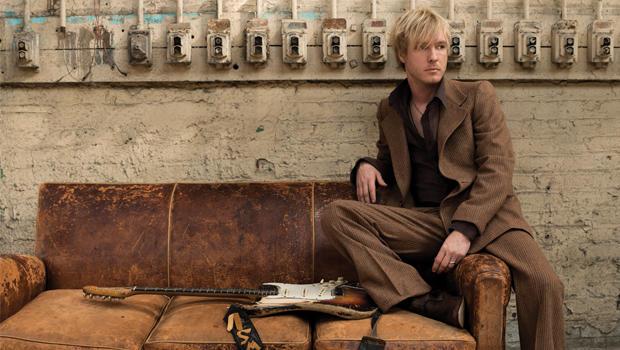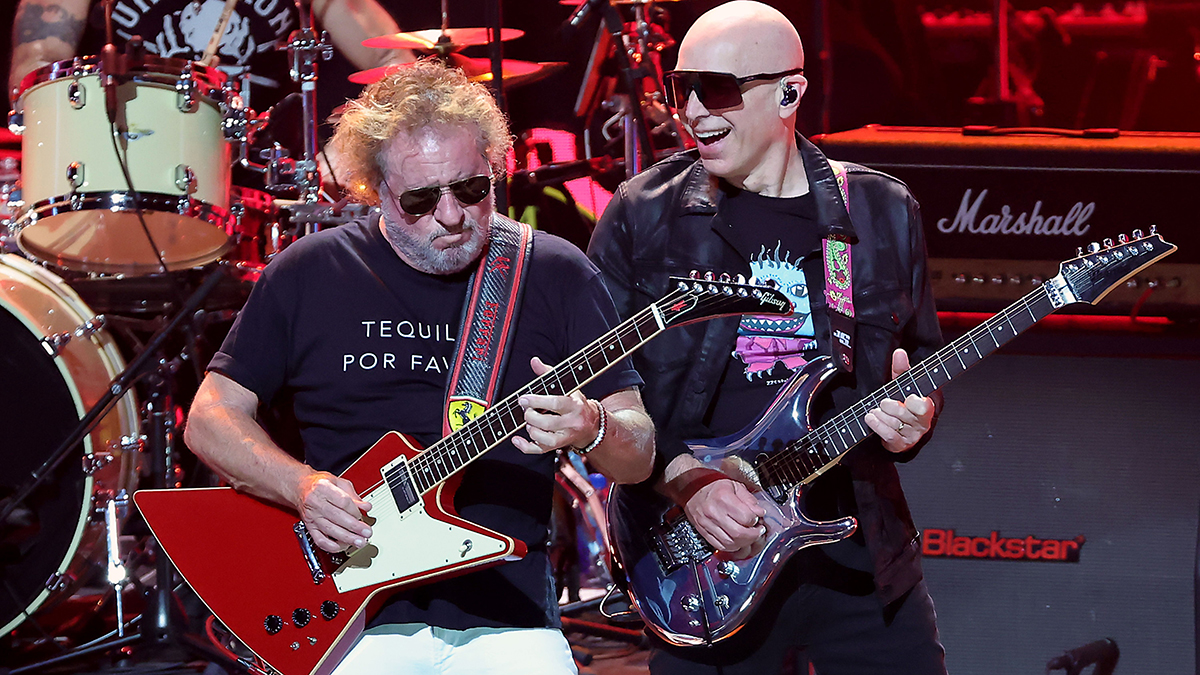The Quest For Ultimate Tone, Part 2: Vibrato Units, Amplifiers and Effects

From the Guitar World archives.
Last time I discussed what I look for in a guitar to achieve my tone. Of course, finding an instrument you like is important, but every piece of gear you use shapes your tone in some way. In this column we'll look at vibrato systems, amps, and effects.
All of my Stratocasters are fitted with whammy bars. I use the bar when I get the urge, either to vibrato notes and chords or to dive down on a single note or group of notes.
Though I'm a right-handed player, my guitars are fitted with left-handed vibrato units. The reason for this is so the whammy bar is positioned just below the low E string, as opposed to just below the high E string, as it is on right-handed units. I got this idea from Stevie Ray Vaughan who took it from Jimi Hendrix. Hendrix, of course, was left handed, and he played right-handed Strats upside-down, so his vibrato units were automatically flipped over. The first time I used a left handed vibrato, I could immediately see the benefits. First of all, access to the bar is easier when it's on top, up by the low E string. When the bar is on the bottom, you have to reach down to grab it, then pull it up to a position where your hand rests right above the strings. I find that if I press to hard with a right-handed whammy bar, my hand touches the strings and deadens the sound. When you're on stage, in the heat of the moment, and you decide to go for a really cool, diving sound, the last thing you want is for the sound to stop suddenly in the middle of nowhere!
With a left-handed system, the bar sits on top, so your hand sits a few inches higher on the body than where the strings are. This eliminates the problem of accidentally deadening the strings when diving with the bar. I can push it all the way down to the body of the guitar, and there's just no way that I'll end up accidentally muting the strings.
The number of springs you use in your setup is also important to get the best combination of feel and sound. Up until now, I've been using all five springs, though my techs are always trying to convince me to use just three or four. The idea is to have just the right amount of tension, so you don't have to try to hard to push the bar all the way down, but it will still be firm enough to stand up to live situations when you have your adrenaline pumping. I have broken countless whammy bars when playing live-so many, in fact, that Fender started custom-making me incredibly heavy-duty, stainless steel arms that just refuse to break!
The part of any vibrato that affects your sound the most is the saddles. The entire string tension rests on them, so they have a tremendous effect on the tone and resonance of the notes. A lot of guitarists like to screw with their saddles, but they might not realize that they may be adversely affecting their tone. I like to use graphite saddles on all of my guitars, because they give me good tone, but they also put less friction on the strings, causing less string breakage.
Get The Pick Newsletter
All the latest guitar news, interviews, lessons, reviews, deals and more, direct to your inbox!
Twin Freak
Now let's get into amplifiers. I'm a big fan of Fenders-my favorite being my reissue 1965 Fender Twin, which is 100 watts with two 12-inch speakers. When Fender first reissued those amps, it was a limited edition run, and they only made 300 of them, all of which were handmade. I was lucky enough to get one. It sounds unbelievable, much better than any other reissue Twin I've ever heard. It's killer! It makes a big, loud sound, but it has a sweet mellow drive that I love.
My stage setup is now that Twin, plus a Fender Vibrasonic, which is a custom-shop amp that's also 100 watts, with one 15-inch speaker. I have also been using Tone Master heads, which have been very reliable on the road. I'm very picky about the speakers that I use; the one's that usually come in the Fender amps are a little too brittle to my ears. I've replaced the standard Fender speakers with 12-inch EV's that are rated at about 200-300 watts. Those things can really handle some power, and they give me a full, rich, mellow tone that doesn't break up too much.
The most important thing about my amp setup is that every night my amps are flat-out. with the volume turned all the way up to 10! It's the only way to get the right tone, as far as I'm concerned. That's the main reason I need high-powered speakers; they can stand up to all that power without breaking up. The notes maintain some clean clarity, but with some overdrive in there, too. My other settings are: treble, between 5 and 6 1/2; middle, between 5 and 8 (which adds to the sustain); bass, 3 or 4 at the most (otherwise my low E gets too muddy); reverb, 2.
Another crucial element in my amps is the tubes. The tone I look for is a combination of a mellow sound, but with a lot of aggressiveness. Sovtek 5881's do the trick, and have proven to be very reliable. With these tubes I can crank my amp up all the way and the sound never gets harsh' it stays sweet and smooth.
Of course, the soundman at every venue says, "You're stage volume is too high!," hassles me to turn down, or starts building baffles and all this stuff to block the sound. But I know that the only way to get "the tone" is to turn up to 10-no two ways about it!
In Step
Let's round off this with a brief look at effects. I'm in the process of trying to acquire as many vintage pedals as I can, but for the moment my pedal board consists of: a reissue Vox wah-wah that I've had a few years now; an original, first issue Ibanez Tube Screamer; a new Dunlop Univibe, though I have a vintage Univibe that I've been using in the studio; and a Roger Mayer Octavia. I'm in the process of trying to nail down a vintage Tycobrae Octavia, but they're going for quite a bit of money right now.
I'm getting close to my dream tone, but I'm still not quite there. I'm planning on buying a few old Fender Vibroverbs, like the ones Stevie used, for the studio. I've played through a few of them, and they make "the tone," for sure. Sometimes you have to search far and wide for the tone you
"A guitarist's ticket to easier home recording": PreSonus Quantum HD 2 review
“What blew me away was that everyone wanted the curly maple top. People were calling, saying, ‘I’ve got to have the bird inlays’”: Paul Reed Smith on raising the Standard 24, finally cracking the noise-free guitar and why John Sykes is a tone hero









